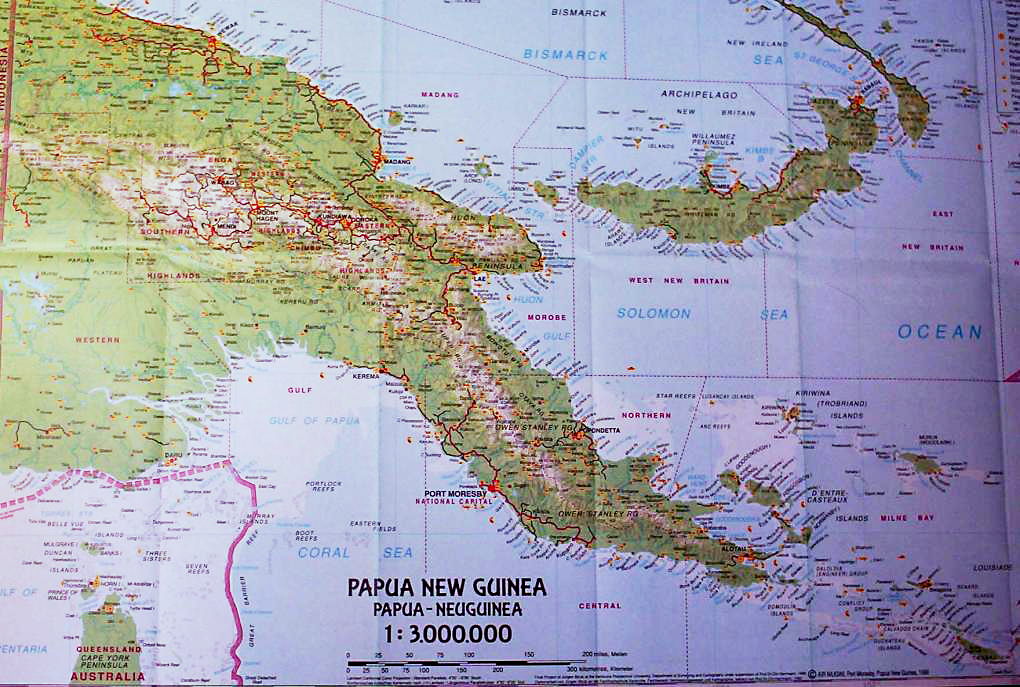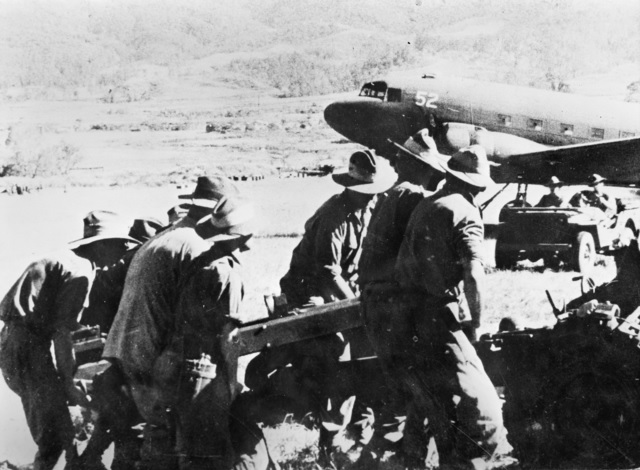
Papua New Guinea
The Kokoda Trail is a single-file track which begins 50km east of Port Moresby in Papua New Guinea and runs 96km overland through the Owen Stanley Range to Kokoda.
The track crosses some of the most rugged and most isolated terrain in the world and it is only passable on foot.
It is steep and can be dangerous, reaching a height of 2,250 metres at Mount Bellamy.
Hot humid days with intensely cold nights, torrential rainfall and endemic tropical diseases such as malaria make it a challenge to walk.
During 1942 and ’43, Allied troops, primarily Australian, fought a series of arduous battles with the invading Japanese forces, strategically retreating under overwhelming numbers, before rallying and holding the Japanese at the Ioribaiwa ridgeline, within sight of Port Moresby.
After heavy fighting, the Japanese were forced to withdraw, and the Australian troops re-captured all of the previously lost territory.
The Battle for Wau
Between the wars, Wau was a gold mining town and large dredges were broken down and airlifted into Wau and Bulolo to sluice for gold. Following the Japanese landings at Lae and Salamaua in March 1942 men from the New Guinea Volunteer Rifles pulled back along the Wau track to Mubo.
In May 1942 the 2/5th Independent Company was flown into the Wau, the first airlift of a complete unit in Australian army history. In late June the Australians raided Salamaua but by August Mubo had fallen and the threat to Wau was acute. The Australian command panicked and ordered the destruction of Wau though the Japanese never advanced beyond Mubo. However in January 1943 the Japanese did advance, using fresh troops brought across from Rabaul.
The Battle for Wau had started when Captain Bill Sherlock’s weakened company from the 2/6th Battalion plus along with some commando veterans took up positions on Wandumi Ridge east of Wau to intercept a Japanese patrol. Little did anyone know that this was no minor enemy incursion and that Sherlock’s company faced a Japanese infantry regiment. The Japanese force had swept up from Mubo via a hidden track and, in a brilliant coup, had got in behind the main Australian positions that guarded either flank. The next 24 hours would determine if it was a decisive move and whether Wau and its priceless airfield would fall before reinforcements could be flown in.
The first attacks struck Lieutenant Ted St John’s platoon deployed on a dominant knoll and these men would take the brunt of the attacks throughout the day. The staunch Australians watched as hundreds of Japanese troops surged forward across the rise of the Wandumi trig point to the west, heading their way while other enemy troops began bypassing the ridge via the wooded gullies below. The Australian infantry took a heavy toll on them. When St John’s platoon finally gave way under the incessant attacks Captain Sherlock led the counterattack to regain the position. Sherlock knew there was nothing between him and the airfield and he needed to hold on. He gave his order, ‘2/6th Battalion, fix bayonets’ then led his men back to rout the enemy from the knoll.
Photo courtesy wikipedia.org
Now down to some 40 men with major ammunition and water supply concerns, Sherlock pleaded for help and a composite company reached him late in the afternoon. He then pulled his men back along the ridge knowing the enemy infantry had infiltrated behind him.
When night came and with the driving rain lashing across the ridge, it was clear the ‘game was up’. Leaving a small rearguard, Sherlock’s battered command, now down to some eighteen men, made its way back down off the ridge to the flooded Bulolo River and the brave Sherlock was killed during the crossing the next morning.
Even as Sherlock fell, the distinctive sound of approaching transport planes, the first of some 60 Dakota planes that would land that day echoed back off the hills. The 814 men the planes brought to Wau ensured the enemy assaults on the airfield would be held and that the battle for Wau would be won.
Vastly outnumbered and under constant attack, the Australians had held Wandumi Ridge and kept the Japanese regiment at bay for over 24 hours. Wau and its vital airfield remained beyond their grasp.
Authentic Military Heritage Tours by fully qualified and field-experienced Guides

Over 40 years experience in tour operations and planning in remote areas, including Papua New Guinea, Borneo, Thailand, Burma, Egypt, Libya.

Management and staff who have in depth historical and geographic knowledge of areas toured and military historical sites and events, in PNG and other countries.

Supervisors experienced in remote area and urban tour operations in PNG, Borneo, Singapore, Malaysia, France, Belgium, Greece, Crete, Thailand, Burma, Turkey, Egypt and Libya.

Full operational travel experience and campaign history with accurate information content and wide geographical knowledge in our programming.

